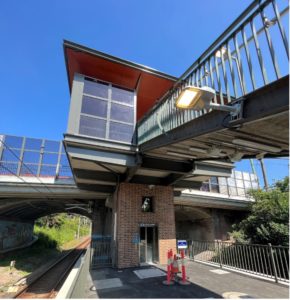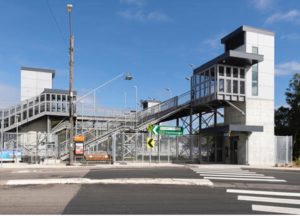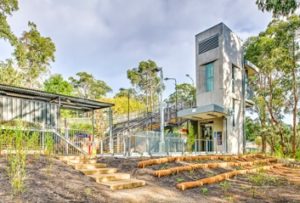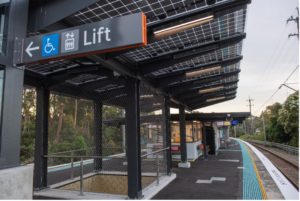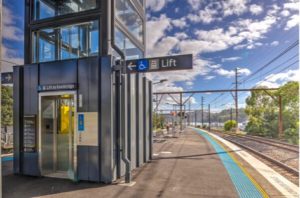Overview
The Transport Access Program (TAP) is delivering a better experience for public transport customers across NSW by providing accessible, modern, secure and integrated transport infrastructure.
TAP projects strive to achieve maximum social, economic and environmental outcomes and value for money. The approach to embedding sustainability on the TAP program is to look at the main activities of the program and identify sustainability opportunities and outcomes.
While the scope of the TAP program will focus on upgrades in line with the Disability Standards for Accessible Public Transport (DSAPT) , the upgrades may also facilitate the use of public transport by:
• Enabling more people to transfer from using private vehicles to public transport by making stations more accessible;
• Designing interchanges to enable people to access stations by sustainable and healthy modes such as walking and cycling and by bus;
Providing accessible parking at stations to enable trains to be used for most of the journey instead of driving the whole journey.
About the Program
The Transport Access Program (TAP) is a NSW Government initiative delivering safe, modern and accessible public transport infrastructure across the state.
The overarching objectives for sustainability on TAP 3 are to inform the development of key targets and actions to deliver improved performance and positive benefits for society and the environment:
- Deliver improved social outcomes through design, procurement and ongoing use of TAP 3 stations.
- Deliver solutions that take into consideration the implications of a changing climate through a risk-based approach.
- Protect and enhance existing biodiversity on projects by taking into consideration impacts to ecosystems and vegetation during the decision making process.
- Manage resources through efficiency measures during design and construction.
- Actively work with the industry to build sustainability capacity and share knowledge through education and ongoing collaboration.
More than $2.2 billion has been invested in the Transport Access Program since 2011 to fund accessibility upgrades at stations, create better transport interchanges and build car parks.
Almost 90 per cent of transport customer journeys begin from locations now accessible to people with disability, those with limited mobility, parents and carers with prams and people with luggage.
Other upgrades have been undertaken to support an integrated transport network and seamless transfers for all customers.
Working with local businesses in regional NSW
Accessibility upgrades are now being planned, now underway or already completed at many regional train stations including Blayney, Wauchope, Armidale, Parkes, Casino, Dubbo, Grafton, Griffith, Narrabri, Moree, Queanbeyan, Taree, Junee, Gunnedah and Cootamundra.
Local businesses and suppliers are being encouraged to submit an Expression of Interest (EOI) to construct the station upgrades.
Why accessibility upgrades are needed
As an operator of public transport under the Disability Discrimination Act 1992 (DDA), Transport for NSW is required to upgrade the public transport precincts to ensure equitable access is provided for all customers.
Some public transport stations, wharves and stops do not currently meet the requirements of the federal Disability Standards for Accessible Public Transport 2002 (DSAPT).
The Standards set out minimum accessibility requirements for public transport providers and ensure that people with disability have equivalent access to public transport services.
Upgrading public transport precincts will make the public transport network accessible to people with additional mobility requirements, parents/carers with prams and customers with luggage.
A copy of the standards can be accessed on the website of the Commonwealth Attorney-General's Department. Further information about the Standards can be found on the website of the Australian Human Rights Commission.
Transport for NSW determines the priority of upgrades using evidence-based criteria, including:
- Current and future patronage
- The needs and demographics of customers who use the location
- Whether important services such as hospitals or educational facilities are nearby
- Cumulative impacts of other construction projects
- The accessibility of other nearby transport interchanges and facilities
The list of upgrades is regularly reviewed so the people of NSW can have confidence that upgrades are delivered where they are needed most.
The current progress of TAP upgrades at individual stations is detailed in the Ratings Directory on the ISC website.
Program Details
- Rating Type: Rail
- Registered Date: 3/11/2020
- State: NSW
- Suburbs: Across NSW
- Assessor: Michelle Quinn













